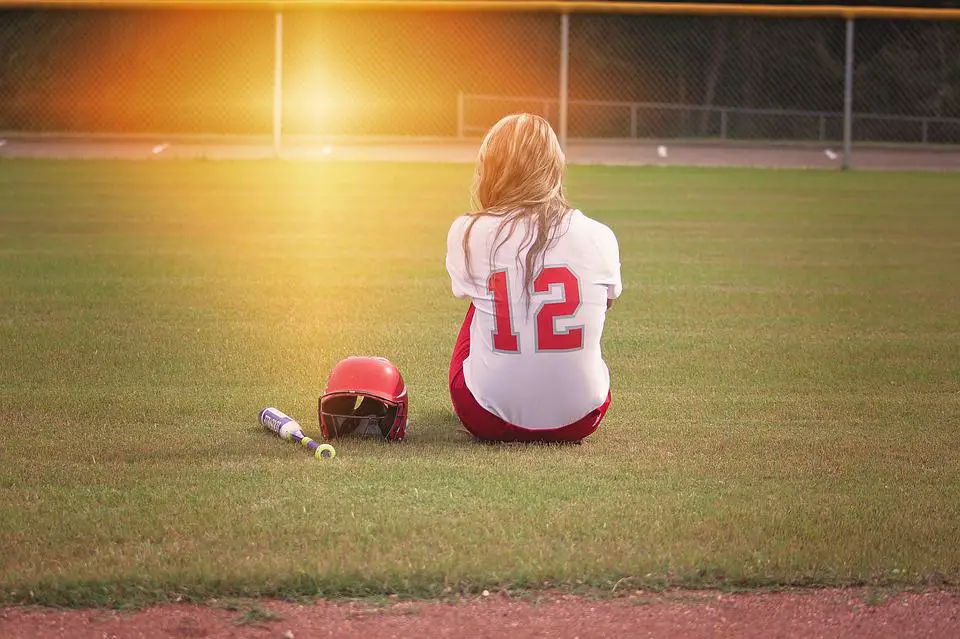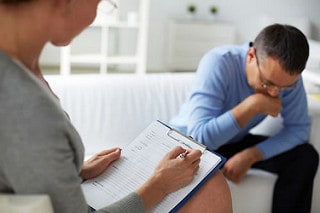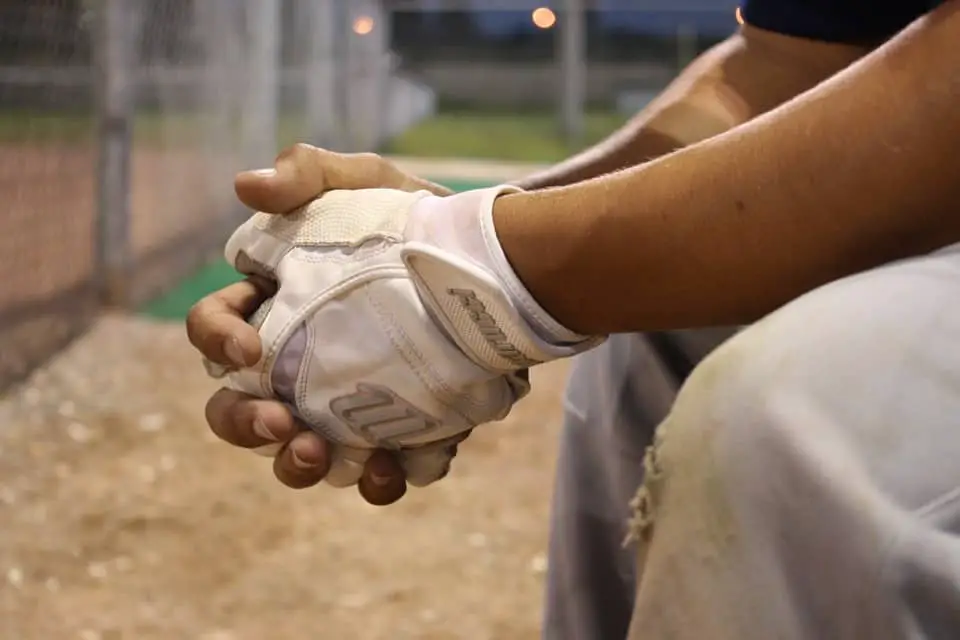Table of Contents
*This post may contain affiliate links. As an Amazon Associate we earn from qualifying purchases.
Overcoming social anxiety in sports isn’t just about getting over shyness or handling performance anxiety. In 1999, when Ricky Williams was chosen in the first round of the NFL draft by the New Orleans Saints and signed to a multi-million dollar contract, everyone thought he had it made. But what everyone didn’t know was that Williams suffered from severe social anxiety. While he could play football in front of hundreds of thousands of people in a packed stadium, he felt utter despair and dread at the thought of going to the grocery store or meeting fans face-to-face. Over the next years, in what should have been his heyday, the Heisman trophy winner became increasingly isolated from his friends and family.
Ricky Williams had social anxiety disorder. With symptoms ranging from shyness to extreme performance-related anxiety, social anxiety affects 15 million Americans today. A spectrum disorder, there exists mild social phobia or shyness on one end and debilitating social anxiety disorder with manifestations like agoraphobia and clinical depression at the other. Fortunately, there are highly effective treatments available, but diagnosis begins with awareness.
What Is Social Anxiety?
Have you ever felt irrationally anxious at the prospect of being judged or evaluated by others in a social situation? Has this type of anxiety ever led to feelings of inferiority, inadequacy, embarrassment, self-consciousness, humiliation, and ultimately depression? If this scenario sounds familiar, you may be experiencing social anxiety. The technical definition of social anxiety disorder, formerly called social phobia disorder, is “a marked and persistent fear of one or more social or performance situations.”
Those who’ve tried overcoming social anxiety since youth have probably heard they’re “just shy” and may have entered sports to help “come out of their shell.” Unfortunately, parents and other well-meaning adults don’t always recognize the signs of social anxiety. Furthermore, they also don’t understand its triggers or know the strategies for overcoming social anxiety in sports.
Symptoms of social anxiety
According to the Social Anxiety Institute, around 7 percent of the population suffers from social phobias. Furthermore, researchers have identified both emotional triggers and physiologic symptoms associated with social anxiety.
Top 10 physiologic manifestations of social anxiety
When you have a physical response to an emotional trigger, it can range from subtle to overt. Here are a few you might encounter during sports.
- Blushing (reddened or flushed face, chest, or neck)
- Profuse and sudden sweating
- Difficulty swallowing/lump in the throat
- Weak voice, shaking or frail sounding
- Tightened muscles, rigid posture
- Tics or uncontrolled movements of the face, eyes, or mouth
- Heart racing, uncontrollable rapid, hard, or irregular heartbeat
- Changes in blood pressure could cause symptoms like a headache, nausea, or fainting
- Shaking/sweating hands
- Racing thoughts coupled with the inability to make a decision
Both the triggers and symptoms of social anxiety are frightening to the sufferer. However, they aren’t always apparent to others. This is important to remember and may help ease the symptoms they are experiencing. Thankfully, there is other good news too. Each year more research is funded to learn about the causes of social anxiety, and new treatment strategies become available. In addition, there are various types of social anxiety as well, and some athletes may be affected by more than one kind. While we wrote this article to address overcoming social anxiety in sports, we’ll discuss other types as well.
Types of social anxiety
Currently, the Diagnostic and Statistical Manual of Mental Disorders (DSM-5) differentiates between generalized social anxiety disorder (SAD) and performance-related SAD. Here is a brief description of both.
Generalized SAD
People with generalized SAD are thought to be uncomfortable in new situations. Being around anyone except their closest friends or family causes anxiety. Since generalized anxiety impacts more of their day-to-day activities, it’s considered to be more severe.
Performance only SAD
A person who experiences “performance only” SAD can have anxiety and fear linked exclusively to performances. This could manifest as a fear of public speaking with no stress at social gatherings. While not as debilitating, this form of social anxiety is still harmful, as it may limit career advancement and performance-related activities like sports.
What Causes Social Anxiety?
Once there is a diagnosis of social anxiety or SAD, the first question is always, “what caused it?” However, there is no single cause of social anxiety. The cause is a combination of genetic predisposition, societal factors, environmental factors, and brain or biological factors.
A 2016 Norwegian study found a very high rate of heritability with SAD. However, it also showed that a subject’s environment and social setting impacted the severeness and longevity of the illness. Furthermore, the same study also linked social anxiety and avoidant personality disorder. This link is a vital clue to treatment strategies.
5 Strategies for Overcoming Social Anxiety in Sports
In their book, “Managing Social Anxiety: A Cognitive-Behavioral Therapy Approach Client Workbook,” Debra A. Hope, Richard G. Heimberg, and Harlan A. Juster discuss the three components of social anxiety and list strategies for overcoming social anxiety in sports. These components are behavioral, cognitive, and medical. In short, how our body reacts to social anxiety, how our mind reacts, and how we instinctively or by choice respond. Through identifying the unique triggers of the stress and then addressing these three component responses, strategies can be devised to treat and cure social anxiety.

1. Identifying triggers of social anxiety in sports
We have listed a few triggers that you may encounter while practicing or playing sports. Some athletes may feel anxious when meeting strangers or players who are new to their team. Others may feel uncomfortable engaging in small talk. Sports is rife with situations that involve judging, teasing (good-natured or otherwise), and criticizing. Obviously, a young person who dreads being the center of attention will feel uncomfortable taking over team captain duties or running specific drills.
The more social aspects of sports or of being a team member are triggers for those who feel uncomfortable eating, grooming, dressing, and performing in front of others. This can include shaking hands or participating in forced introductions where they’re expected to say something friendly or share personal information.
2. Social skills practice for overcoming social anxiety
Training of social skills is a behavioral therapy technique used to improve the intrapersonal abilities of people living with social anxiety. Social training utilizes coaches, teachers, therapists, and other professionals to help athletes in overcoming social anxiety in sports.
Eye contact and other non-verbal communication
In sports, nonverbal communication, body language, and eye contact play a significant role. Moreover, athletes with social anxiety may have “closed” body language, which signals to other players that they are unapproachable. This is a natural response to fear. However, through practice, it is possible to improve the openness of nonverbal behaviors. Specific areas to work on include:
- Eye contact
- Body language
- Facial expressions
- Posture and confidence
Verbal communication, small talk, and conversation
Verbal communication is another soft skill that can be practiced and improved. To those with social anxiety, small talk may seem like a puzzle. Sufferers have trouble processing questions, knowing how to respond, or they feel uncomfortable amounts of pressure when sharing personal information.
One useful exercise is to make a list of “answers.” Give your athlete the cheat sheet and then ask questions that correspond. Being able to practice these situations will ease their anxiety as they learn how to respond appropriately.
3. Assertiveness and confidence training
As all behavioral exercises, assertiveness training should be performed voluntarily and via a trained coach or counselor. However, the object is not only to improve performance in confrontational situations but also to empower the athlete to take control of everyday situations they might otherwise avoid.
Assertion roleplaying is significant in group therapy. It could include the following:
- Have the counselor give a personal opinion
- Encourage the group to disagree
- Show the group a calm and relaxed response
- Gradually, promote the group to participate
Called graduated exposure therapy or systematic desensitization, it is a technique used to treat many disorders, including PTSD.
4. Cognitive therapy for overcoming social anxiety in sports
Cognitive treatment (or CT) used in combination with behavioral therapy addresses a variety of psychological ailments and psycho-social disorders. CT is a type of psychotherapy that eliminates negative thought patterns. Additionally, these thoughts are self-focused and situational. When successfully tested, it changes the athlete’s anticipation of and resulting models of social anxiety.
The cognitive therapy model understands that social anxiety links to unrealistic social standards, and inabilities to select attainable social goals, and accurately evaluate the issue. Research relates the perception of an event to its perceived outcome, indicating that there is a perceptual cycle at play in regards to social anxiety.
When confronted with challenging social situations in sports, athletes with SAD shift their attention toward the anxiety trigger or response. They view themselves only as a “social object,” and they often overestimate the negative impact of their social encounters. Therefore, they believe that they offer little control over the event and their response. Often, they perceive their social skills are not adequate to cope with the social situation effectively. So, to avoid awkward social mishaps, individuals and athletes with social anxiety revert to their maladaptive coping mechanisms. These include avoidance or safety behaviors. The cycle continues as these events are followed by excessive rumination, leading to future social apprehension.
Cognitive therapy techniques
Separate and in conjunction with behavioral therapy, the following cognitive methods or tools may be helpful with the athlete who is overcoming social anxiety in sports.
- Cognitive testing
- Individual therapy
- Group therapy
- Conceptualization work
- Role-playing
- Family therapy
- Situation awareness
- Automatic thoughts awareness
5. Medical diagnosis and treatment
Traditionally, medicine plays a role in the treatment of many psychological illnesses such as anxiety, depression, and ineffective coping. After a complete evaluation and medical diagnosis, a physician may recommend traditional medical therapies, such as prescription medications, along with cognitive and behavioral therapies. The following procedure may help the doctor reach a medical diagnosis of social anxiety.
Diagnostics for SAD
The physical examination assesses any medical causes of anxiety. The review of symptoms will discuss how often and when they occur as well as a review of the triggers. The specific criteria for social anxiety disorder (SAD) are listed in the DSM-5 and published each year by the American Psychiatric Association. Criteria for social anxiety disorder include:
- A persistent and intense fear/ anxiety regarding specific social interactions relating to feelings of judgment, embarrassment or humiliation
- Avoidance of any social anxiety-producing situation
- Enduring social anxiety-producing situations with an emotional response
- Worry out of proportion to a situation
- Distress from social anxiety that interferes with your daily life
Medications for SAD
Several types of medications treat social anxiety disorder. This list is not all-inclusive, and it’s for general information only. Medications start at the lowest dose. The doctor will gradually increase the dosage until symptoms improve. This technique reduces the side effects of the drugs. However, it can take several weeks or even months to notice an improvement of symptoms.
- SSRIs or selective serotonin reuptake inhibitors work for persistent symptoms of social anxiety. Brand names for a couple of common SSRIs are Paxil and Zoloft.
- SNRI or serotonin and norepinephrine reuptake inhibitors like Effexor XR might work for social anxiety.
- Other antidepressants
- Benzodiazepines like Ativan, Xanax, and Valium are quick acting but also habit forming and would be only advisable for short-term use
- Beta blockers block adrenaline. They often have side-effects that affect the heart and circulatory system
When to Seek Professional Help for Overcoming Social Anxiety in Sports

Recently, athletes like Michael Phelps have come forward to talk about anxiety and depression, bringing mental illness to the forefront. As a result, here are some things we’ve learned.
Social anxiety disorder causes significant distress for children, teens, and young adults. Those with social anxiety are often and more likely to isolate themselves out of fear of negative response or embarrassment. Therefore, it has adverse effects on academic and sports performance and well as social relationships.
Unfortunately, research shows that depression is related to persistent anxiety and ineffective coping. However, while social anxiety may be lifestyle threatening, depression is life-threatening. In sports, coaches may notice that certain athletes seem reserved, shy, or socially awkward. These are signs of social anxiety. If the athlete becomes withdrawn or drops out of sports altogether, it is time to suggest help.

